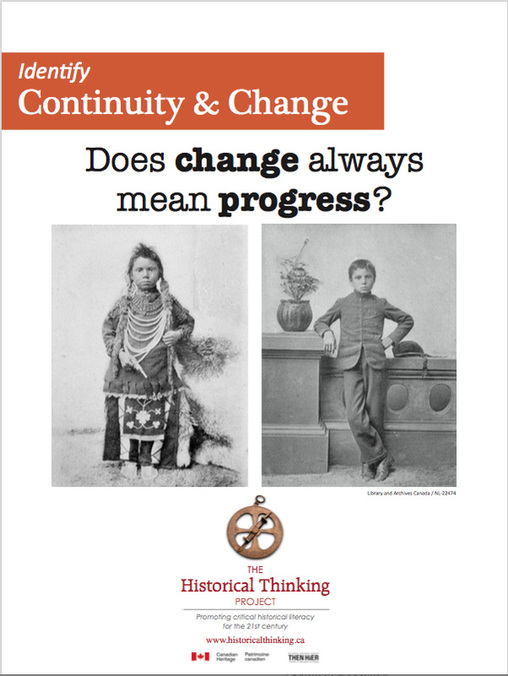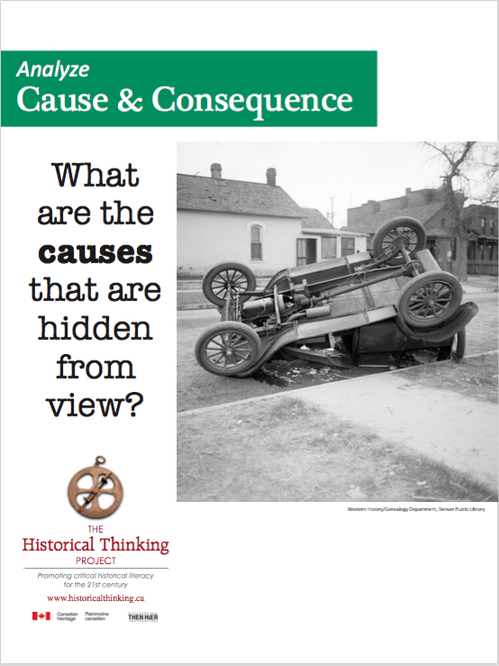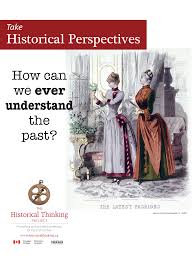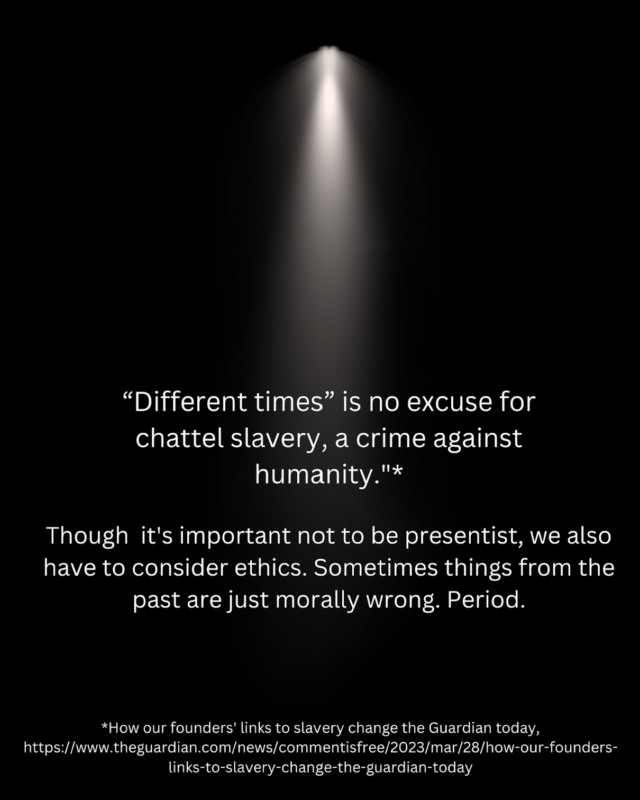Historical Thinking Concepts
If you are brand new to HTCs or want a refresher on what they are, watch this intro! (February 2024)
CHY4U_2020_Historical_Thinking_Concepts_Overview 
Historical thinking, or discipline-based thinking, is part of the Ontario curriculum. I love it because it promotes critical thinking, meshes well with inquiry teaching, and focuses on learning rather than memorizing. I was trained by the Historical Thinking Project led by the late Peter Seixas. Their approach is my approach.
Each historical thinking concept has guideposts, meaning tips on how and when to use them. For those who struggle with the concepts, it’s very important to understand FIRST that history is something we analyze, not just something we memorize. HTCs are the tools we use to analyze.
History is complicated and that is why it deserves a set of tools to analyze it effectively and deeply.
History Vs. The Past
History itself is a constructed concept. Do the activity in this video exploring the difference between history and the past to help you understand the entire basis of HTCs.
The HTCs
Continuity and Change Guideposts: 
- Continuity and change are interwoven – they overlap. They are not opposites. They can happen at the same time, just like you as a person can remain the same in some ways (eye colour) and develop and change in other ways (height, even hair colour).
- Different groups of people experience progress improvement in their lives) and decline (worsening in their lives).
- There are turning points in change, either in pace of change or direction of change.
Continuity and Change Vocabulary Starter List:
Change: evolution, revolution, stray, develop, speed up
Progress: benefit, improve, develop, advance, innovate
Decline: suffer, harm, spiral down, reverse, slow down, regress, collapse, slide
Continuity: same, tradition, holdover, hang onto, preserve, perpetuate
Video
Causes and Consequences Guideposts:
- There are usually multiple causes of an event, not just one.
- Causes can be long-term (underlying/background), medium-term, or short-term (triggers).
- Consequences can be unintended (mostly) or intended.
- Causes can be the result of the work of individuals, groups, and /or social forces (isms). (Like the three points of a triangle).
Causes and Consequences Vocabulary Starter List:
Cause: contribute to, lead to, have its origin in, act as roots, force, establish
Consequence: result in, end up as, lead to, affect, influence, impact
Video
Causes and Consequences (PDF overview without sound)

Historical Perspectives Guideposts:
- There’s a big difference between the worldviews of people today (beliefs, values, motivations) and the worldviews of people in the past. Recognizing this gap is crucial. Otherwise, we’ll assume they thought or acted like us.
- Avoid presentism (imposing our own standards or values on the past). Just because technology might have been different in the past, it doesn’t mean it wasn’t highly advanced for its time.
- When you interpret primary evidence, you must look at it within the historical context of its own time and from the historical perspective of who created/wrote it.
- Different groups of people had different views on events. Some people may have dissented from (disagreed with) the mainstream views of society.
Historical Perspectives Vocabulary Starter List:
nouns: point of view, perspective, view, worldview, outlook, angle
verbs: experience, believe, value, consider, think, see, perceive
Video
Weighing Presentism and Ethics
Historical analysis is not always simple. History students are encouraged to have open minds and to make interpretations based on the evidence. However, there are some times when we cannot simply just say that we can’t be presentist. Sometimes, ethics outweigh presentism. Some events in history are just immoral, no matter what the standards of the time were. No matter what time period in history, genocide is always immoral. Slavery was always immoral, even if it was widely accepted in many societies.
Weighing presentism and ethics is kind of like a balancing act. A lot of people, especially these days, want to smooth over the horrors of the past saying that prejudice and discrimination were just normal in the past so we shouldn’t worry about them. That is a very simplistic approach that doesn’t take into account the fact that there were ALWAYS dissenters (people who disagreed) and were possibly acting to counter the so-called normal trends.
In this course there will be many instances where ethics and presentism seemingly clash: slavery and its apologists, imperialism and its promoters, Eurocentrism, etc., etc. Read this article from The Guardian on its founders’ links to slavery.

Primary Source Evidence
Use the SHEG chart in your unit 1 handouts to help you learn how to read (interpret) PSDs. It’s from the Stanford History Education Group (SHEG) who produce some of the best materials for historical thinking.
https://docs.google.com/document/d/1KWo7XLpuvVsAwi7ZPa07suwpXnx-sCiGr9-U_tnguLI/edit?usp=sharing

HTC Tracking Sheets – use these to chart your own progress on each concept
CHW3M_HTC_Tracking_Sheet_Ethical_Dimension
CHW3M_HTC_Tracking_Sheet_Hist_Perspectives
CHW3M_HTC_Tracking_Sheet_Primary_Source_Evidence
CHY4U_HTC_Tracking Sheet_Contin-Change
CHY4U_HTC_Tracking_Sheet_Cause-Consequence
Other Approaches to Historical Thinking
The National Archives (a US governmental body) also has an excellent set of worksheets to help students interpret various kinds of primary source documents. They all follow these four steps:
- Meet the document.
- Observe its parts.
- Try to make sense of it.
- Use it as historical evidence.
motion_picture_analysis_worksheet
sound_recording_analysis_worksheet
written_document_analysis_worksheet
_________________________________________________
“Historical Thinking” is a movement within the teaching of history. It has many variants in terms of the specific skills each focuses on. Here are a few, starting with the Canadian version that my students are familiar with.
The Historical Thinking Project – Canadian (my basis for HTCs – the Ontario government chose not to include primary evidence and ethical dimensions when adding to the curriculum)
- establish historical significance
- use primary source evidence
- identify continuity and change
- analyze cause and consequence
- take historical perspectives
- understand ethical dimensions of history
America’s History in the Making (Annenberg Foundation, Learner.org). Uses American topics to teach skills through interactive exercises. – American
- placing artifacts in time
- analyzing artifacts
- reading maps
- evaluating primary source evidence
- curating an exhibit
- balancing sources (this is my favourite interactive – I have gone through the Kent State example)
Historical Thinking Standards (National Center for History in the Schools, UCLA)- American
- chronological thinking
- historical comprehension
- historical analysis and interpretation
- historical research capabilities
- historical issues-analysis and decision making
Teaching History .org (National History Education Clearinghouse) – American
- Multiple Accounts & Perspectives
- Analysis of Primary Documents
- Sourcing
- Understanding Historical Context
- Claim-Evidence Connection